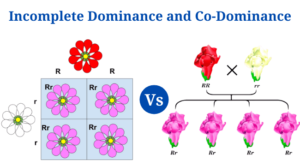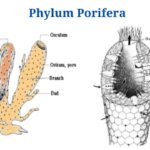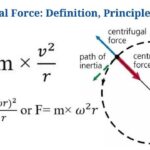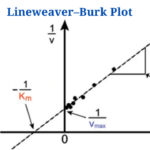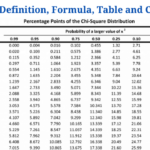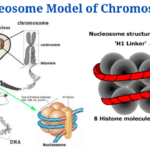Definition of Incomplete Dominance
A dominance mechanism in heterozygotes wherein the dominant allele doesn’t completely override recessive allele’s phenotypic expression, resulting in an intermediary phenotype inside the heterozygote is Incomplete dominance.
- Since the phenotype emerging from the genotype is essentially a combination of dominant and recessive genes, incomplete dominance is also known as partial dominance or semi-dominance.
- Flowers with dominant allele red along with the recessive allele white are one illustration of this. Due to partial dominance, heterozygous flowers from these alleles may look pink.
- Incomplete dominance occurs when the dominant allele is unable to entirely dominate the recessive gene, resulting in a phenotype that is a combination of both. Incomplete dominance is significant because it clarifies the presence of a combination of two alleles which Mendel didn’t mention in his experiment.
- The Law of Dominance was developed by Mendel to show that one out of these two alleles is dominant because it at all times controls the recessive trait.
- Because the pea plant he chose for his experiment did not display partial dominance, Mendel was unable to analyse it.
- However, his approach may still be used to predict the outcomes of incomplete dominance allele crossings. His model predicts that the F1 generation would have a 1:2:1 genotypic ratio and a red, pink, and white phenotypic ratio.
- Even when partial dominance exists, the alleles are inherited according to Mendel’s rule.
- In quantitative genetics, there is no dominance if the phenotype of heterozygous alleles is exactly in the middle (numerically) of the two homozygotes. That is, for a heterozygote to be dominant, its phenotype must be closer to that of one of the homozygotes.
Definition of Co-Dominance
In a heterozygote, co-dominance is a dominance mechanism in which both alleles of a gene do not have the dominant and recessive association and every allele can express several phenotypic features.
- Since heterozygote exhibits traits of both homozygotes, co-dominance is commonly mistaken for no dominance at all.
- As a result, the heterozygote genotype produces a phenotype that is distinct from any of the homozygous genotypes.
- The entire upper case base symbols with distinct superscripts are utilized for codominant alleles. The capital letters imply that every allele can convey itself to some extent regardless of its alternative allele is present.
- Plants with co-dominance have a dominant red phenotype and a recessive white phenotype, resulting in blooms with pink and white dots in the heterozygote.
- Co-dominance, such as incomplete dominance, wasn’t described by Mendel because the model which he used did not convey co-dominance.
- Though, Mendel’s approach may be accustomed to predict the outcomes of co-complete dominance crossings of alleles. His model predicts that the F1 generation will have a genotypic ratio of 1:2:1 and a phenotypic ratio of red: spotted: white.
- Co-dominance is most immediately seen in plants as well as animals of two diverse colours, however it can as well be found in less evident features such as blood type.
- Therefore, co-dominance differs from incomplete dominance in that both alleles co-exist but separately in co-dominance, although in imperfect dominance, the phenotype is a combination of the two alleles.
Difference Between Incomplete Dominance and Co-Dominance
(Incomplete Dominance Vs Co-Dominance)
| Basis for Comparison | Incomplete dominance | Co-dominance |
| Definition | Incomplete dominance is a dominance mechanism in heterozygotes wherein the dominant allele doesn’t completely override recessive allele’s phenotypic expression, resulting in an intermediary phenotype within the heterozygote. | Co-dominance is a dominance mechanism in which both alleles of a gene in a heterozygote not have the dominant and recessive association and every allele can express several phenotypic features. |
| Phenotype of the Hybrid |
The hybrid’s phenotype is a combination, unification, or intermediary of the two homozygotes. |
All homozygous phenotypes manifest themselves separately. |
| Expression of alleles |
In partial dominance, one of the two alleles has a stronger effect than the other. |
The effect of both alleles is equally noticeable in co-dominance. |
| The impact of the two paternal alleles on the child is intermediate. | The offspring’s of both parents will be affected by their alleles. | |
| Phenotype |
The resultant phenotype is unique since the two traits through both parents were blended. | The phenotype that results is not novel since the two parental phenotypes do not combine. |
|
In the hybrid, no one of the paternal phenotypes is seen. |
In the hybrid, both paternal phenotypes is seen. |
|
|
There is no allele for the new trait. |
Two phenotypes from two separate alleles combine to form the new phenotype. |
|
| Dominance | One of the alleles has a little advantage over the other. | In regard to the other, neither allele is dominant or recessive. |
| Quantitative approach | Due to imperfect dominance, both incompletely dominant alleles can be studied quantitatively. | Only quantitative gene expression analysis is possible with co-dominance. |
| Examples | Both Mirabilis jalapa’s pink flowers and human hair structure are examples of incomplete dominance. | Co-dominance can be seen in human blood types and livestock with speckled colours on their feathers or hair. |
Click Here for Complete Biology Notes
Incomplete Dominance Examples
(a) Humans have wavy hair
- Humans have curly hair as a dominant characteristic, while straight hair is a recessive trait.
- The resulting phenotypic in heterozygous animals is wavy hair, which is a cross among curly and straight.
- Wavy hair is the outcome of partial dominance, in which the phenotype is the product of the mixture of the two features.
- As a result, wavy hair is a distinct phenotypic from straight or curly hair.
- With the phenotypic ratio of curly: wavy: straight, offspring produced by two parents with homozygous genotypes will own a genotypic ratio of 1:2:1.
(b) Mirabilis Jalapa’s Pink Flowers
- When a pure line or homozygous with red petals (C1C1) crosses with a pure line or homozygous with white petals (C2C2), the F1 progeny has no red petals but pink petals, indicating partial dominance (C1C2).
- When an F2 is created, the progeny will show the following characteristics:
¼ red petals – 1 C1C1
½ pink petals – 2 C1C2
¼ white petals – 1 C2C2
- Red is the dominant attribute for flower colour, while white is the recessive trait. As a result of partial dominance, the phenotypic is pink.
- The trait that results is unique to this generation, as it did not exist in the homozygous parents’ generation.
Co-Dominance Examples
(a) Blood type in humans
- Human blood type is defined by the gene that codes for proteins which show on the exterior of blood cells.
- A, B, and O are the alleles present, with A and B representing two diverse proteins and O representing that proteins are not present.
- Co-dominance can result in the coexistence of A and B proteins, similar to how two hues in a flower might coexist.
- As just an outcome, if both proteins A and B are handed down and expressed in the children, the children’s blood type may be AB.
- However, blood type O has a dominant/recessive connection, meaning that if the A and B genes are expressed, O is not.
(b) Livestock
- As a result of co-dominance, various animals have distinct skin and feather hues.
- When a white-feathered chicken breeds with a black-feathered chicken, the offspring have both white and black feathers due to co-dominance.
- Both qualities are expressed independently of one another during co-dominance.
- In cows, a similar phenomena occurs when black and white cows are bred together, resulting in cows with white and black spotting.
- Both qualities are expressed independently of one another as a result of co-dominance.
- Roan is the term for a varied coat of diverse colours hair in cattle, which is also a product of co-dominance.
PhD in Psychology : Career, Admission Process, Benefits, Opportunities.
Incomplete Dominance Vs Co-Dominance Citations
- https://www.quora.com/If-Mirabilis-jalapa-red-and-white-flowers-are-crossed-what-can-be-the-phenotype-and-genotype-of-the-F2-generation
- https://uomustansiriyah.edu.iq/media/lectures/6/6_2019_02_25!03_50_33_PM.pdf
- http://www.qu.edu.iq/med/wp-content/uploads/2014/05/Gen.Lec3epistasis.pdf
- https://www.youtube.com/watch?v=9Ycgo-vtn6o
- https://www.differencebetween.com/difference-between-dominance-and-vs-codominance/
- https://www.allinterview.com/showanswers/82671/how-is-co-dominance-different-from-incomplete-dominance.html
- https://quizlet.com/144197425/biology-genetics-flash-cards/
- https://quizlet.com/120299490/dominance-codominance-and-incomplete-dominance-flash-cards/
- https://marlawatt.files.wordpress.com/2014/11/types-of-dominance.pdf
- https://ibiologia.com/codominance/
- https://courses.lumenlearning.com/boundless-biology/chapter/patterns-of-inheritance/
- https://biologydictionary.net/codominance/
- http://theagricos.com/genetics/gregor-mendel/dominance/
- https://www.thoughtco.com/heterozygous-definition-373468
- https://www.bswhealth.com/patient-tools/blood-center/Pages/blood-type-genetics-and-compatibility.aspx
- https://www.answers.com/Q/In_humans_blood_type_inheritance_is_an_example_of
Related Posts
- Phylum Porifera: Classification, Characteristics, Examples
- Dissecting Microscope (Stereo Microscope) Definition, Principle, Uses, Parts
- Epithelial Tissue Vs Connective Tissue: Definition, 16+ Differences, Examples
- 29+ Differences Between Arteries and Veins
- 31+ Differences Between DNA and RNA (DNA vs RNA)
- Eukaryotic Cells: Definition, Parts, Structure, Examples
- Centrifugal Force: Definition, Principle, Formula, Examples
- Asexual Vs Sexual Reproduction: Overview, 18+ Differences, Examples
- Glandular Epithelium: Location, Structure, Functions, Examples
- 25+ Differences between Invertebrates and Vertebrates
- Lineweaver–Burk Plot
- Cilia and Flagella: Definition, Structure, Functions and Diagram
- P-value: Definition, Formula, Table and Calculation
- Nucleosome Model of Chromosome
- Northern Blot: Overview, Principle, Procedure and Results

